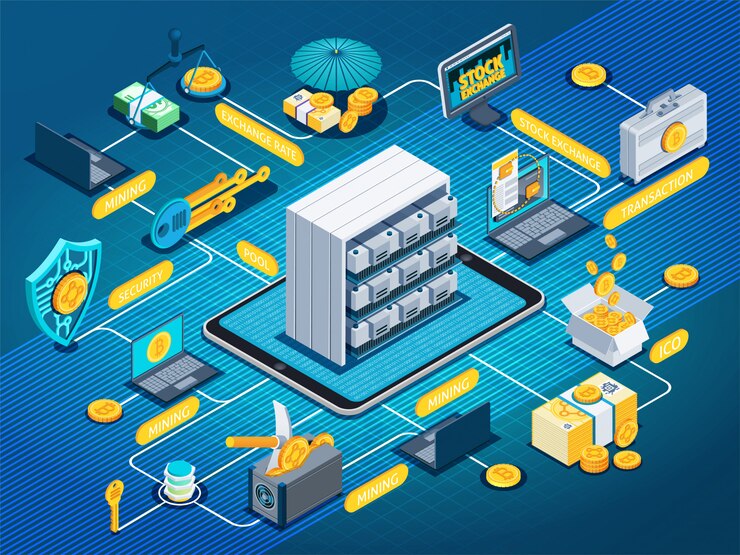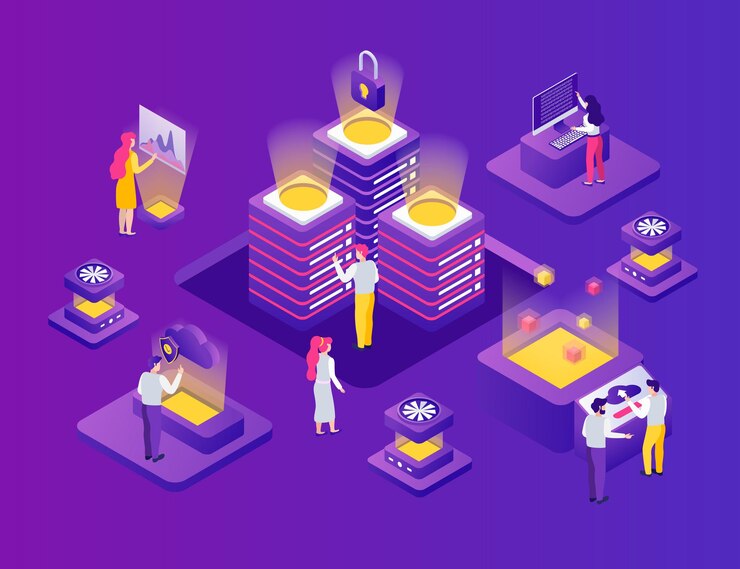A distributed blockchain crypto in 2024 or a ledger that hits the shelves with all nodes in a computer network answers this name. Though their applications are not just restricted to cryptocurrencies, they are most recognized for their vital function in cryptocurrency systems in upholding a safe and decentralized record of transactions. Data in any business may become immutable—the phrase used to indicate the inability to alter considerably—by using blockchain technology.
Table of contents.
Market Growth
This section discusses the projected growth of the cryptocurrency market in 2024
Regulation
This section explores the current state of cryptocurrency regulation and potential future developments.
Technological Advancements:
A user’s or program’s entry of data is the only point where confidence becomes mandatory because blocks cannot shift. This feature lessens the need for reliable third parties, most often auditors or other people who make mistakes and increase expenses.
Through the development of several cryptocurrencies, decentralized finance (DeFi) apps, non-fungible tokens (NFTs), and smart contracts, blockchain applications have surged since the launch of Bitcoin in 2009.
How Does a Blockchain Work?
You may have worked with databases or spreadsheets before. Since blockchain is a database that stores and enters information, it is comparable in certain ways. However, the structure and accessibility of the data distinguish a blockchain from a conventional database or spreadsheet.

Tasks the same as typically performed in a database, such as data entry, retrieval, and storage, skillfully using scripts that form a blockchain. For a distributed blockchain to qualify as valid, it must apply for registration on multiple devices in the form of numerous copies that must be identical.
Here are some resources to dig deeper:
Similar to a spreadsheet cell holding data, the blockchain gathers transaction data and stores it in a block. The hash, that is to say, a hexadecimal number, comes into existence once it is jam-packed and the data is familiar via an encryption procedure.
After that, the hash is extraneous to the adjacent block header and encrypted with the rest of the block’s data. This produces a chained-together set of blocks.
Advantages of blockchain
- They’re global: It implies that cryptocurrency may overload oneself rapidly and be affordable approximately worldwide.
- They increase privacy: You armor yourself from identity theft and hacking when you use cryptocurrency payments since you are not required to provide personal information.
- They’re open: The blockchain, which has a public record of every transaction on cryptocurrency networks, allows anybody to examine them in detail. This eliminates the possibility of manipulating transactions, altering the amount of money in circulation, or changing the rules midway through a game. Anyone may examine the code of the essential software that powers these currencies since it is free and open-source.
What’s the future of blockchain?
It appears that a wide variety of applications may come into existence on top of the blockchain concept. Though blockchain technology is still in its early stages of development, many experts have likened its potential to revolutionize our way of life and work to the potential that public internet protocols like HTML had in the early days of the World Wide Web.
- There are several similarities between the original Bitcoin blockchain and the blockchains used by Bitcoin Cash and Litecoin. Because it’s not made just for managing virtual currency, unlike the Bitcoin blockchain, the Ethereum blockchain represents a further development of the distributed ledger concept. However, Ethereum is a cryptocurrency and may base itself upon transferring value to another individual. Programmers may evaluate the Ethereum blockchain as a versatile and robust computing platform that simplifies the creation of various apps.
- For example, imagine that for a year, a charity wanted to distribute money to a thousand recipients each day. This would only require a few lines of code using Ethereum. Perhaps you are a video game producer who aspires to make tradeable things outside of the game, such as armor and swords? Furthermore, Ethereum has been especially to achieve that goal.
Who invented the blockchain?
In late 2008, an individual or group going by the moniker Satoshi Nakamoto released an online essay outlining the fundamentals of a brand-new digital currency named Bitcoin. Since then, every cryptocurrency has developed from the concepts presented in that article.
- Nakamoto wanted to build a digital currency that would allow two strangers to deal online from anywhere around the globe without yearning for a middleman like a credit card company or payment processor like PayPal.
- This necessitated the creation of a system that would resolve the complicated “double spending” problem, in which an individual may utilize the same funds more than once. A network that continuously confirms the flow of Bitcoin is the answer. Blockchain is that network.
- Beyond the control of any individual, business, or nation, every Bitcoin transaction benefits from security and has a green light from an international network of computers.
- Blockchain is a database containing all of that data. That massive, decentralized, or peer-to-peer network of computers is what “mines” bitcoins. It also continuously secures and verifies the blockchain’s correctness. Miners get small amounts of Bitcoin as payment for their processing power contributions to the blockchain.
- The ledger records every Bitcoin transaction. New data is periodically collected and appended to previous blocks to build new blocks.
- This ever-expanding ledger withheld accuracy by harnessing the combined processing power of the miners. The blockchain is necessary for the emergence of Bitcoin since every transaction involving all currently-existing currencies can slip through the cracks up there, as well as every new Bitcoin.

Difference Between a Private Blockchain and a Public Blockchain?
A public blockchain is a term used for an open or permissionless blockchain, notwithstanding individuals can freely join and manufacture nodules with this platform. Due to their open structure, blockchains require protection through encryption and consensus mechanisms like proof of work (PoW). On the other hand, every node must receive approval before joining a private or permitted blockchain. The security layers do not need to be as strong because nodes are theoretical to be trustworthy.
Conculation.
I don’t see “conculation” appearing in any standard English dictionaries or reliable sources. Here’s what we can explore further:
